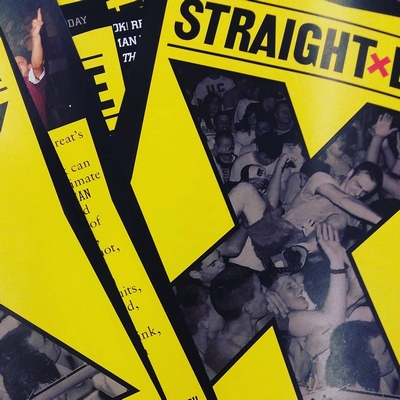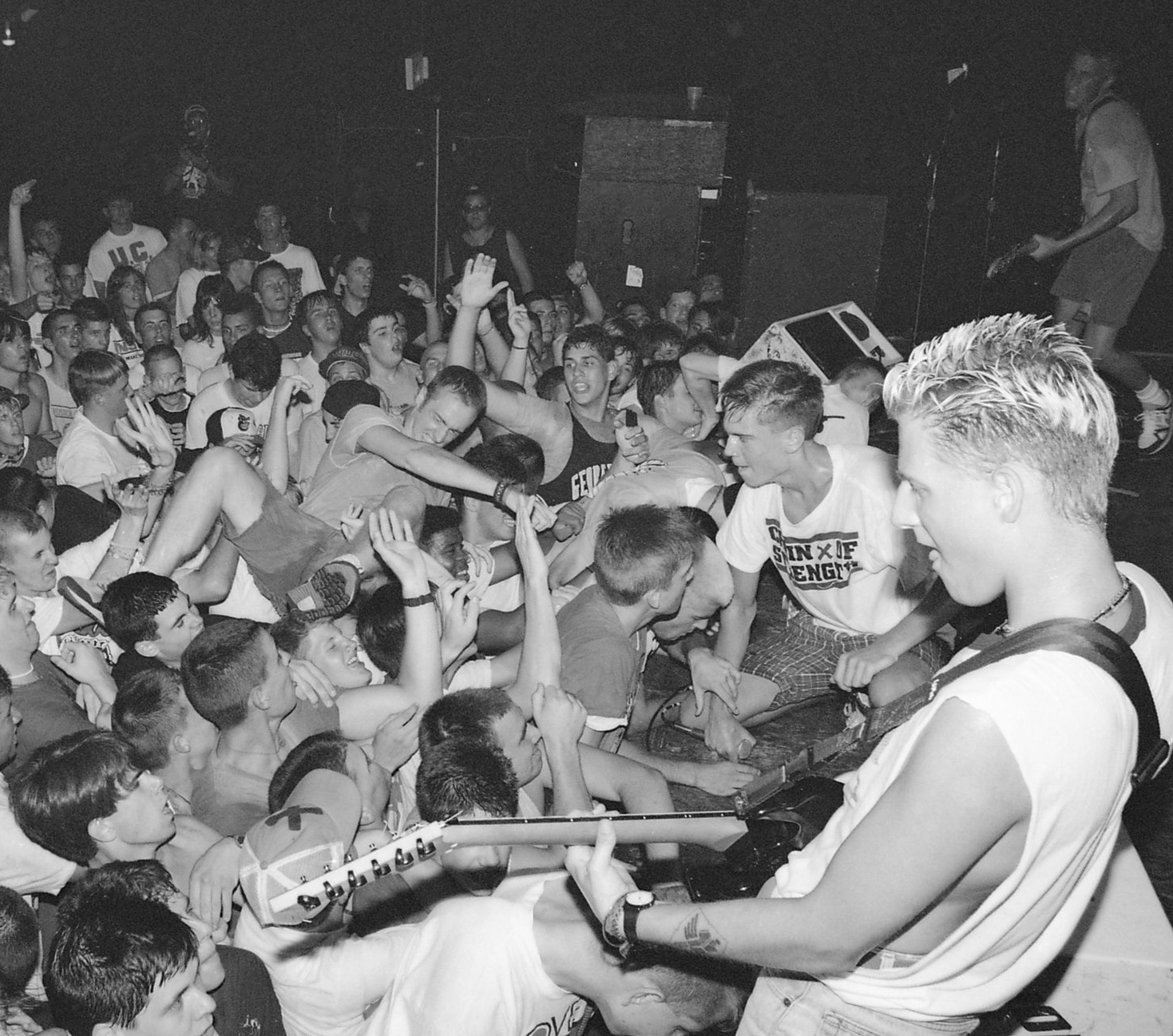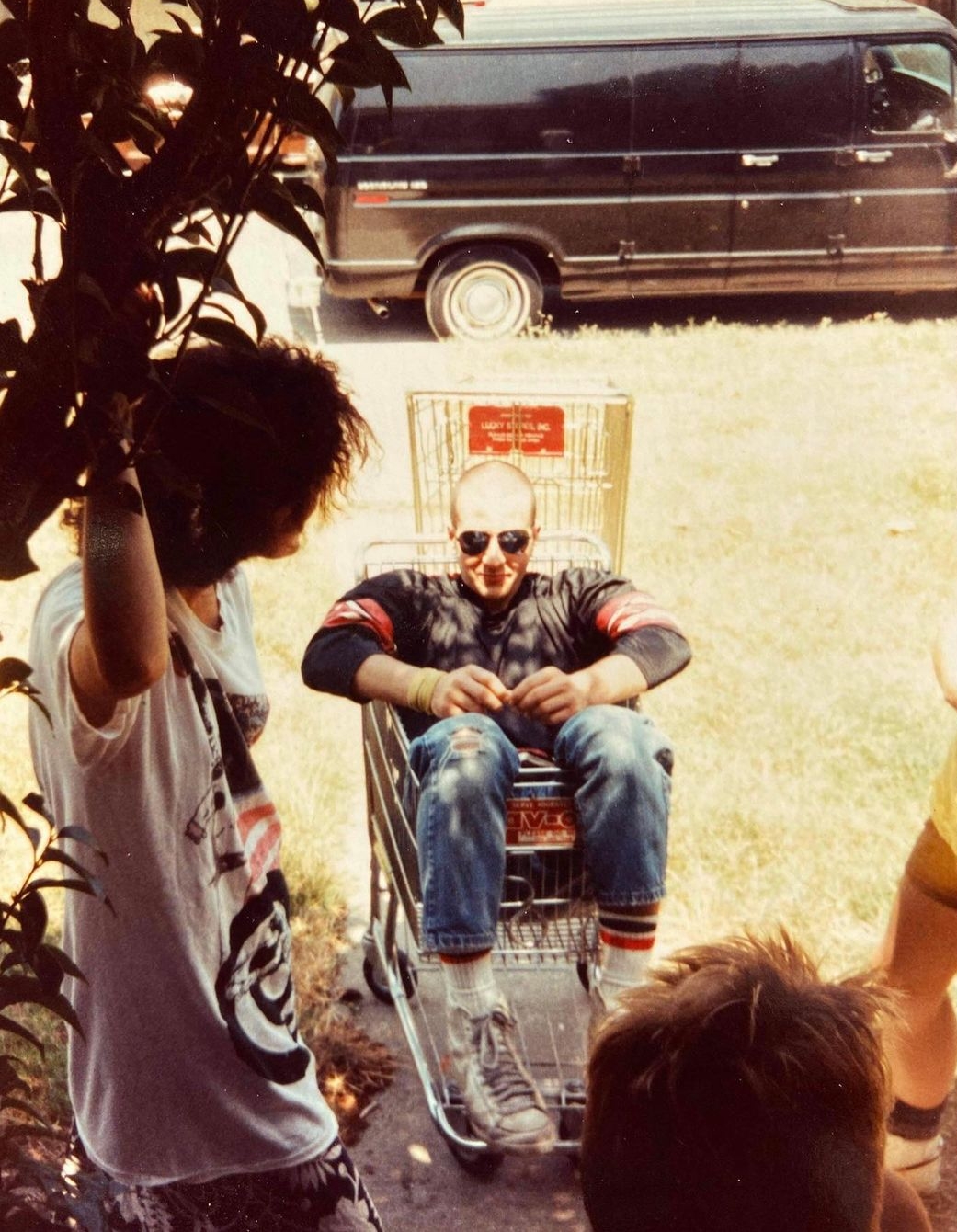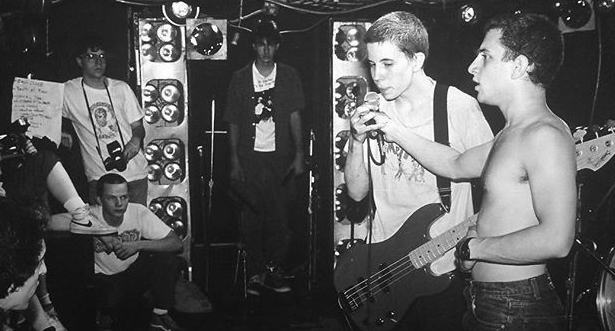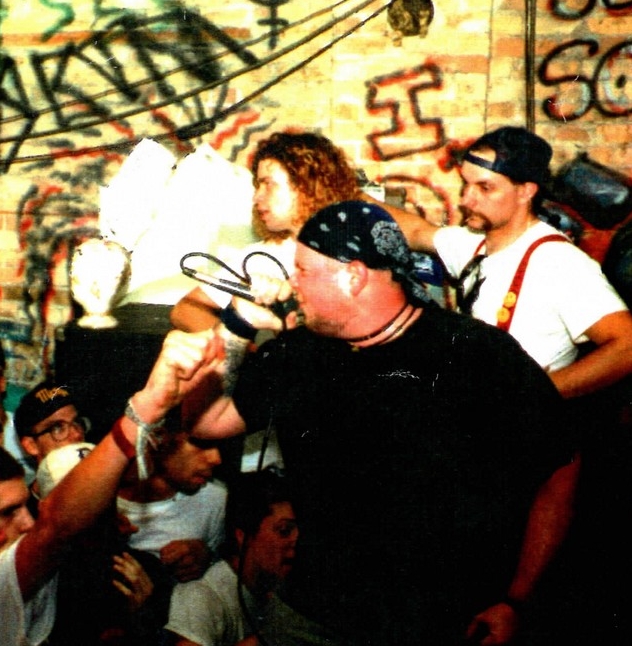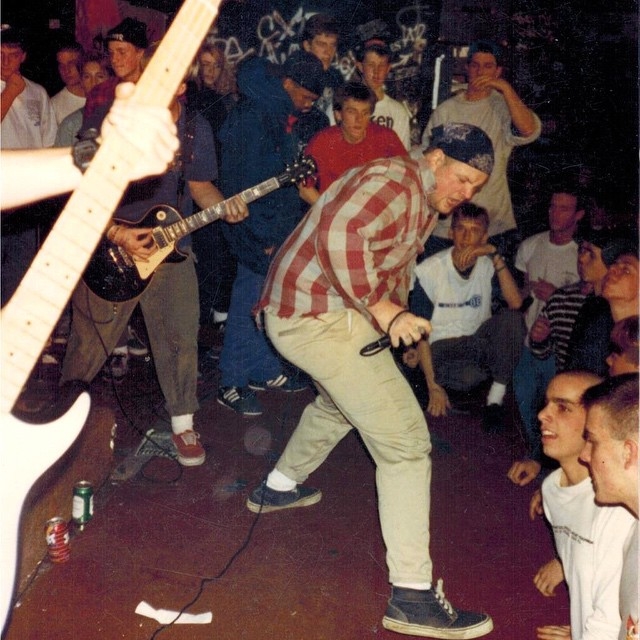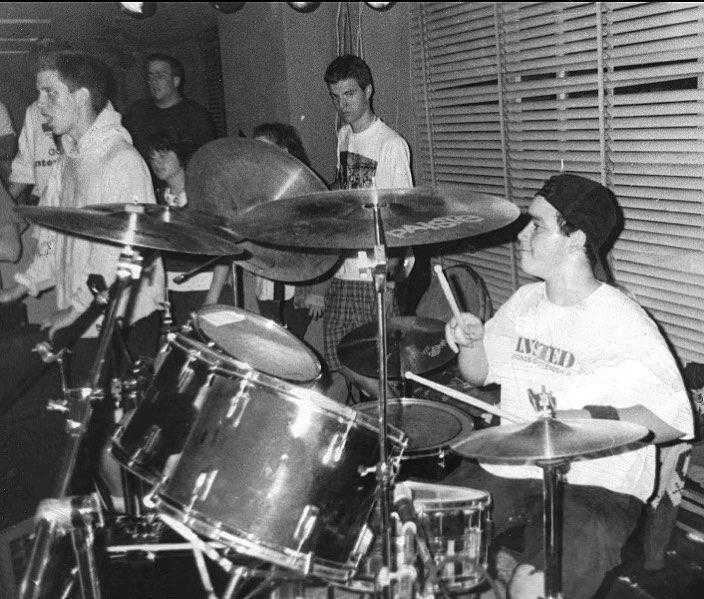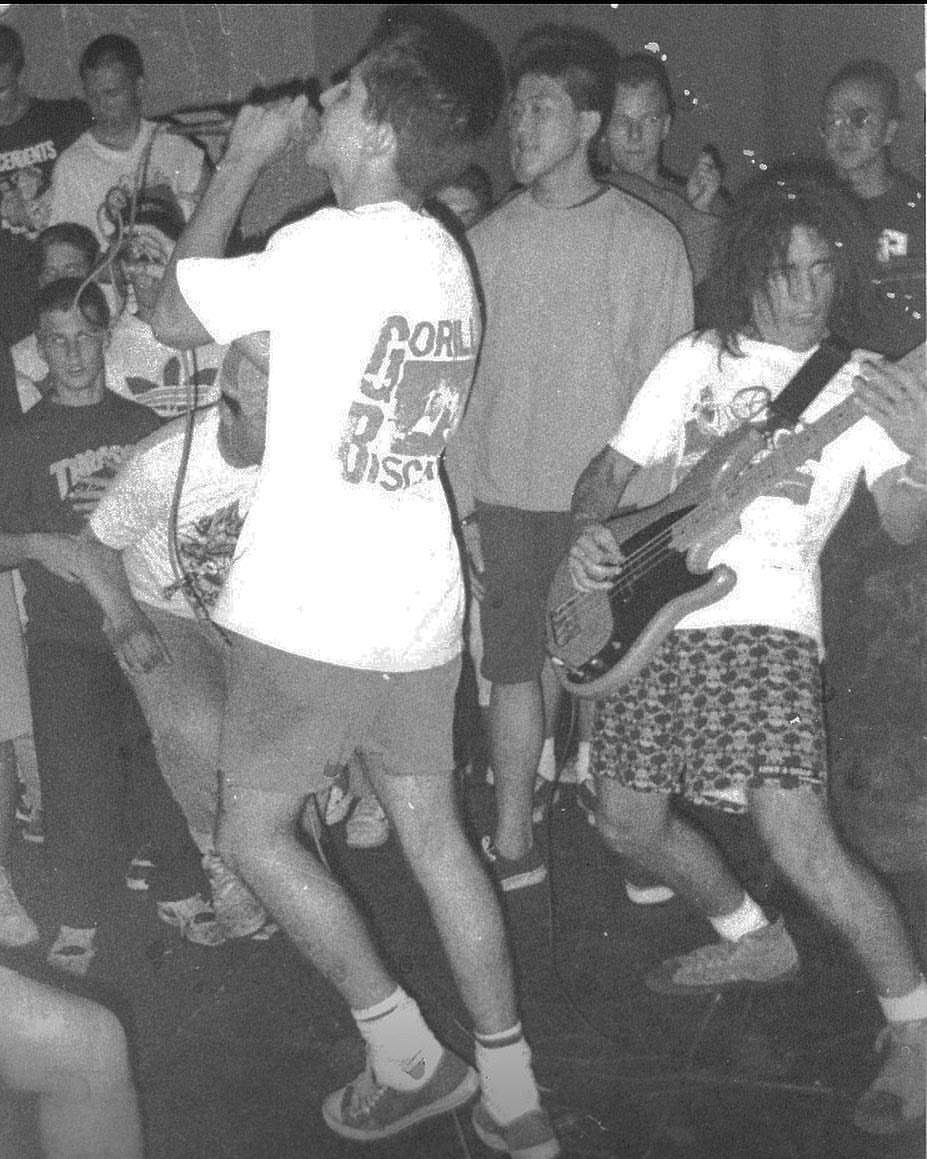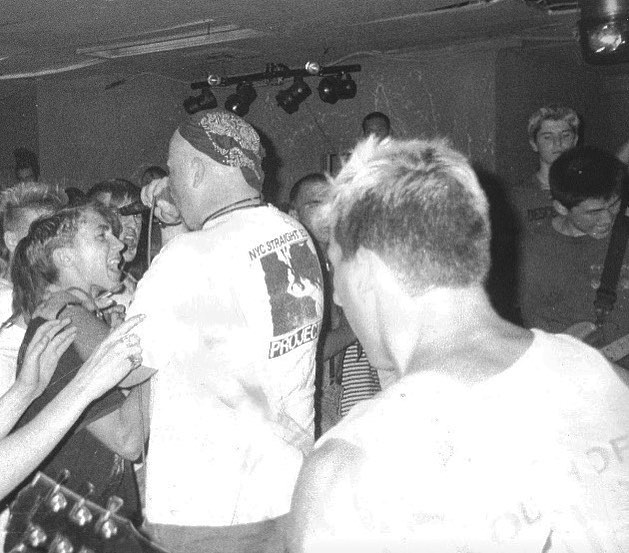Back in the day in 2017, Tony Rettman was generous to send me an unedited BOLD chapter from his book “STRAIGHT EDGE: A Clear-Headed Hardcore Punk History” which I also shared in my fanzine in the same year. So you can check it out below. Pics by: Free Thought fanzine, Boiling Point fanzine, Think fanzin, Ken Salerno.
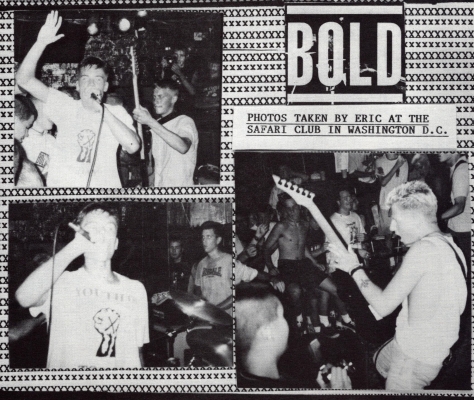
(You can order the book here: https://sandpaperlullaby.bigcartel.com)
Ray Cappo (Violent Children, Youth of Today, Shelter): When Violent Children was active prior to Youth of Today, we always wanted a brother band to play out with.
John Porcelly (Young Republicans, Violent Children, Youth of Today, BOLD, Judge, Gorilla Biscuits, Shelter, Project X): Youth of Today’s first drummer’s little sister was friends with these seventh graders that had Mohawks and played in a punk band.
Ray Cappo: Crippled Youth was basically a local punk rock band made up of thirteen-year-olds. We were really excited to hear them. They played at the Anthrax in Stamford, Connecticut, opening for the Descendents, and everybody loved them.
Mike Gitter (xXx fanzine): Crippled Youth were twelve year-olds playing straight edge hardcore. That was such a great, uncalculated marketing idea. Who wouldn’t want to see a band of prepubescent kids playing their interpretation of old school hardcore?
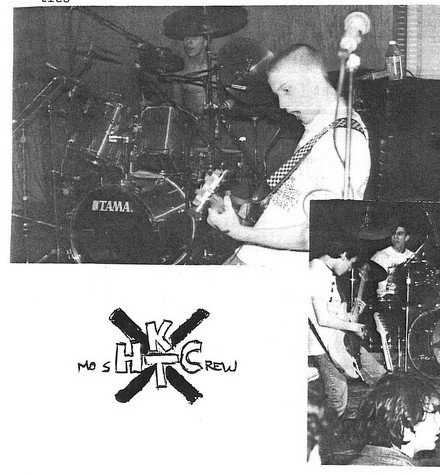
Dave Zukauskas (Run It! fanzine): When Crippled Youth started out they were more punk. They had a song called “Desperate for Beer,” and they did Black Flag covers. But I guess even by the time of their first show they had posi-youth type songs like “Stand Together,” and that’s what really impressed Ray and Porcell. At the time there were no other straight edge type bands from the area. I’m guessing that Youth of Today saw Crippled Youth, who were all 13 and 14 at the time, as the one band playing the Anthrax with whom they had something in common.
Steve Reddy (NY Wolfpack): The scene was so small at that point that discovering these fourteen-year-old kids from Katonah, New York, playing hardcore was crazy. And the first time I met Crippled Youth, they were real punks. They had their hair gelled up into spikes and stuff like that.
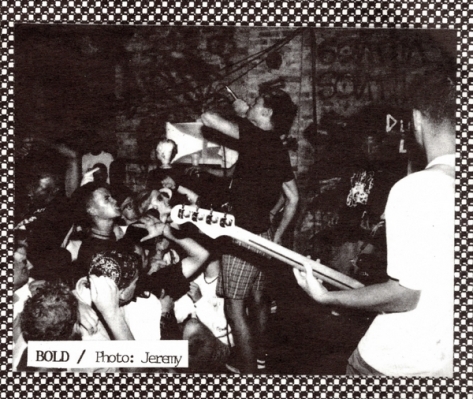
Matt Warnke (Crippled Youth, BOLD): Ray, John, Darren and Graham from Youth of Today were all at Crippled Youth’s first Anthrax show. The fact that we were all from nearby and were into 7 Seconds, Agnostic Front, and Dischord Records made them interested in us. Also, we all skated at that point. We started hanging out, and those guys lent us so many great records by SSD, DYS, Jerry’s Kids, Negative Approach, Reagan Youth, the Abused, and Antidote. We knew of the bands, but having access to the records was critical and fortunate, and definitely helped to influence our sound and sensibilities.
Ray Cappo: They lived right near Porcell and we became friends. I had a ramp in my yard and we would skate it. They were young kids and wanted music. We’d give them all the good records and say, “It took us years of buying the stupidest records. I wish someone did this for me. Here’s a stack of nothing but the greatest records!” They became our younger brothers.
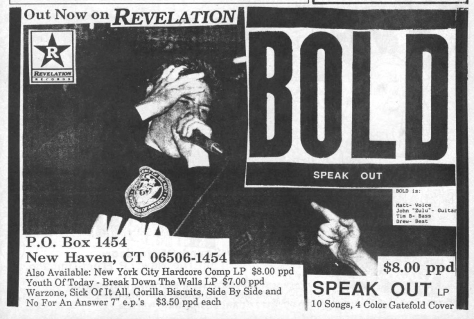
Drew Thomas (BOLD, Youth of Today, Into Another): Maybe it is a bit lofty to think about, but I believe at the time Youth of Today tried to align themselves with what SSD had done as far as taking a leadership role in the scene. With that said, I think in Bold, we saw ourselves a bit more as a “younger brother band” like DYS, if there had to be analogies drawn.
Dave Zukauskas: Plus, you know, Crippled Youth needed someone to drive them around, they weren’t old enough to have their licenses yet, so it made it convenient for Youth of Today and Crippled Youth to play shows together.
Jordan Cooper (Revelation Records): Ray and Porcell probably consciously wanted Crippled Youth to be a little brother band, and they ended up becoming longtime friends. As for their “role,” Bold was probably the closest band to Youth of Today as far as mutual support and camaraderie.
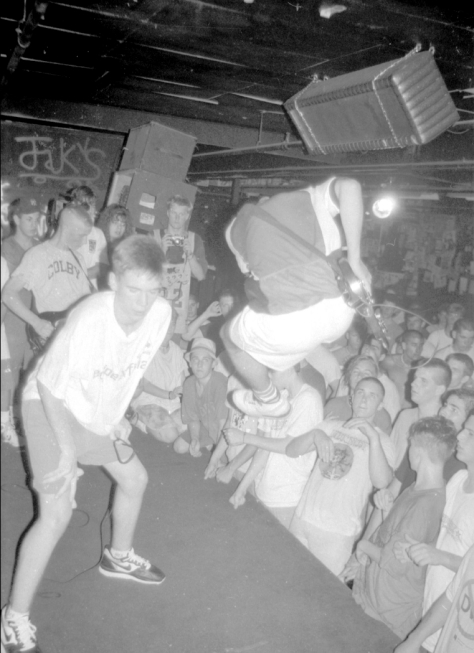
Matt Warnke: Crippled Youth came upon resistance and resentment in the same way Ray and Porcell had. One incident in particular occurred after Crippled Youth had a one-page feature in Maximum Rocknroll right around the release of our seven-inch EP Join The Fight. Our label New Beginning Records and its founder Mike Trouchon arranged that. The piece was fairly innocuous, and I was just completely psyched, looking forward to being in the zine in which I had read about so many bands. One of the questions was something along the lines of, “How do you feel about yourselves and other straight edge bands getting flack for stating your beliefs?” Drew responded by drawing the analogy between us and other straight edge bands championing our beliefs and day-to-day habits, and those of Murphy’s Law, who sang proudly of their party-loving ways. No one questioned them for that, he pointed out. I remember reading that and having a bad feeling in the back of my mind that this would not go unnoticed. Fast forward to say six weeks later, I was at a show at the Ritz. I’m not sure who headlined, but Murphy’s Law were playing. About midway through the set, Jimmy G introduced a song, I want to say “Care Bear,” and he basically called out Crippled Youth for having the audacity to say something about his band. I just remember it felt like a spotlight shone right on me, and everyone who was near me stepped back six feet. I was thinking, “Thanks, Drew.” Mark Ryan from Death Before Dishonor and Supertouch came up to me and was like, “Don’t worry about it, I’ll talk to those guys and straighten it out.”
Murphy’s Law’s set ended, and Mark insisted we head backstage to iron things out. I remember the looks I got from Petey Hines and Joe Bruno. I was trying to be tough, but I was like fourteen years old facing these cats. Anyway, nothing was really resolved that night despite Mark speaking on our behalf. So the next day, I had stayed over in New Jersey, and we headed into Manhattan to the CB’s matinee as per usual. I remember being in the back of Mike Ferraro’s Camaro. I don’t think we really talked about it too much, but there was a sort of underlying concern of what could happen. We had no real way to know. I remember walking down Third Avenue towards CB’s. Then I think Mark again had a word with Jimmy Gestapo, and Jimmy just came over and shook my hand, made a joke, and that was that.
John Porcelly: The whole Youth Crew thing is still relevant, because, like the new generation, we were young and considered naive and dumb for taking such a hard stance against drinking and still clinging to fast hardcore with breakdowns, instead of more “mature” music with complex songwriting and musicianship. Most of the older generation had moved on. But we loved that early mosh-tastic, super-hard hardcore. To this day I think young, energetic alternative kids find it the most powerful, moving music ever.

Caine Rose (Touch X Down, 4 Walls Falling, Fed Up!): I think Minor Threat, the Faith, SSD, DYS and a few West Coast bands already heralded the turn of the philosophy into a movement in the early to mid 80s. The late ‘80s saw a new and more powerful revival of straight edge by these amazing New York, Connecticut, and mid-Atlantic bands. It wasn’t necessarily new, but it was more dynamic and even supercharged. It was the right time and place for a music revolution. And straight edge hardcore was undoubtedly one of the most formidable champions of musical zealotry.
Chris Bratton (Chain Of Strength, Inside Out): When Nirvana broke in 1991, they’d hit the reset button powerfully stripping shit back down to the basics and in doing so, they instantly swept away and made irrelevant all the hair metal bands and all the other shit, even Michael Jackson, who was infamously bumped from the number on position on the Pop Charts by Nirvana’s Nevermind LP. When Youth of Today broke big in 1987, they’d also hit that same reset button stripping shit all the way down and also instantly swept away all that had become bloated and irrelevant in hardcore.




